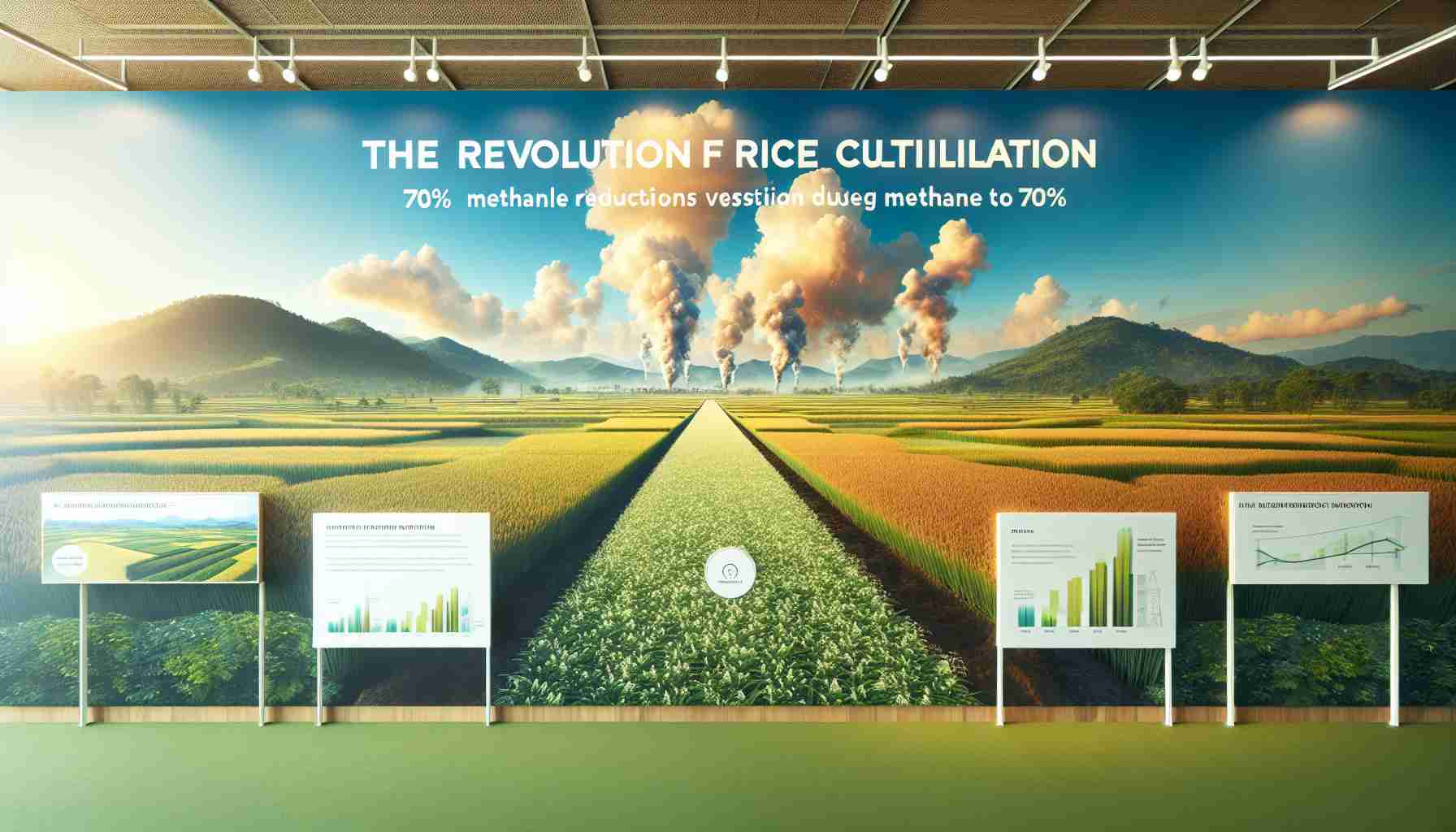- This revolutionary hybrid rice reduces methane emissions by 70%, significantly aiding in sustainable agriculture efforts.
- Rice farming contributes approximately 12% of human-made methane emissions, highlighting the need for eco-friendly solutions.
- The breakthrough results from scientific modifications to the chemicals emitted from rice roots.
- Enhancing ethanol production while lowering fumarate is key to curbing methane emissions.
- This innovation is crucial in ensuring both food security and support for climate change mitigation.
- Adopting such sustainable practices could lead to healthier rice ecosystems and a stable food supply for future generations.
Imagine a future where rice farming not only feeds the world but also fights climate change. Researchers from China and Sweden have made a stunning breakthrough by developing a revolutionary hybrid rice that slashes methane emissions by an incredible 70%—a significant leap towards sustainable agriculture.
Rice cultivation is notorious for its environmental impact, contributing to about 12% of human-made methane emissions, a greenhouse gas far more potent than carbon dioxide. As global populations continue to surge, finding sustainable solutions becomes crucial. This new rice hybrid emerges as a beacon of hope, aiming to safeguard our planet while ensuring food security.
What sets this innovative rice apart? The secret lies in its roots. Scientists discovered that by modifying the chemicals released from rice roots—specifically reducing fumarate and boosting ethanol production—they could dramatically curb methane emissions. This low-methane variety promises not just to sustain rice production but to do so in an environmentally friendly way.
The implications are enormous. As the urgency for eco-conscious farming practices heightens, this hybrid rice positions itself as an essential player in the battle against climate change. By embracing such innovations, we can expect not only healthier rice paddies but also a more stable food supply for future generations.
Key takeaway: Sustainable innovations like this hybrid rice are not merely experimental; they are essential to protect our planet while nourishing a growing population. The future of farming could indeed be greener—and it starts here!
Revolutionary Hybrid Rice: The Future of Sustainable Agriculture is Here!
Breakthrough in Hybrid Rice Research
Recent advancements in agricultural science are paving the way for more sustainable farming practices. The new hybrid rice developed by researchers in China and Sweden is not just a game-changer for food production but also a vital tool in combating climate change. By cutting methane emissions by 70%, this innovative strain addresses two critical global challenges: feeding an increasing population and mitigating environmental impact.
Understanding the Technology Behind Hybrid Rice
The process of developing this low-methane rice variety involves intricate alterations in its root chemistry. By reducing the release of fumarate and promoting ethanol production from rice roots, scientists have achieved a remarkable reduction in methane emissions. This transformation not only supports sustainable agriculture but also enhances the overall health of ecosystems typically affected by conventional rice farming practices.
Pros and Cons of the New Hybrid Rice
Pros:
1. Substantial Reduction in Methane Emissions: By cutting emissions by 70%, this rice variety can significantly reduce its environmental footprint.
2. Enhanced Food Security: With global populations rising, this hybrid offers a means to increase rice yields sustainably.
3. Healthier Ecosystems: Less methane means less impact on climate change, benefiting biodiversity and local environments.
Cons:
1. Adoption Challenges: Transitioning to a new crop variety can be challenging for farmers accustomed to traditional practices.
2. Cost Implications: Initial costs for acquiring seeds and modifying farming techniques might be prohibitive for some farmers.
3. Biodiversity Concerns: There may be fear of reduced genetic diversity if hybrid varieties dominate production.
Market Forecasts and Trends
As awareness of climate change grows, the demand for sustainable agricultural practices is escalating. The hybrid rice market is expected to expand dramatically, with projections suggesting a 15% annual growth rate over the next decade. Governments and organizations promoting sustainable agriculture are likely to support the adoption of such innovations, making them increasingly mainstream.
Related Frequently Asked Questions
1. How does hybrid rice compare to traditional rice regarding yield?
Hybrid rice generally produces higher yields than traditional varieties due to enhanced growth traits and resilience to diseases. Farmers can expect up to 20% more production per acre with the new hybrid.
2. What role does this hybrid rice play in global climate initiatives?
The hybrid rice contributes to climate initiatives by lowering methane emissions associated with rice farming, thus helping countries meet their greenhouse gas reduction targets specified under international agreements like the Paris Agreement.
3. Are there any resistance concerns related to the new rice variety?
Initial studies show no significant concerns regarding pest resistance for this hybrid rice. Continued monitoring and research are necessary to ensure its long-term viability and resilience, especially in changing environmental conditions.
Conclusion: A Step Toward Sustainable Solutions
The development of this revolutionary hybrid rice signifies a transformative step towards sustainable agriculture. By integrating innovative technologies with traditional farming practices, we can create a future where food security and climate stability coexist. Embracing these advancements opens up new avenues for addressing the challenges of agricultural sustainability while promoting healthier ecosystems.
For more information on sustainable agriculture and innovative farming techniques, visit FAO.
Explore further into the realm of sustainable technology and findings at World Bank.













